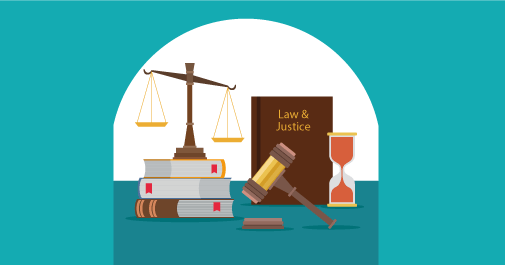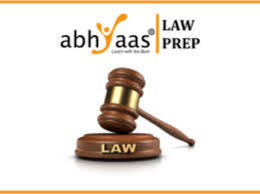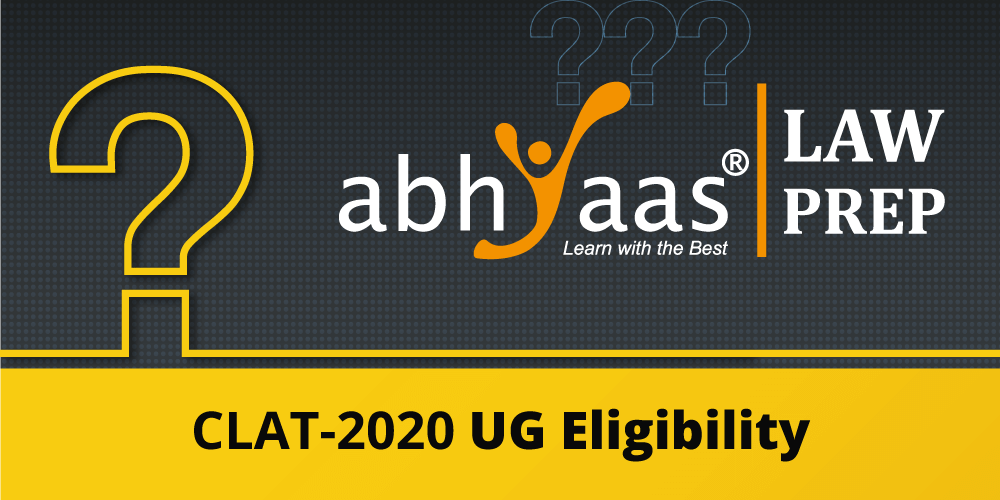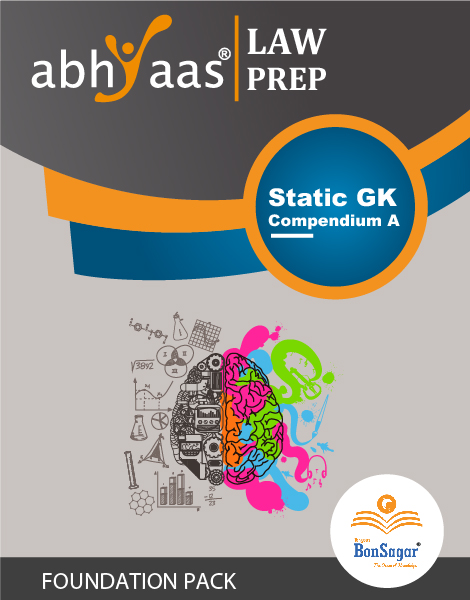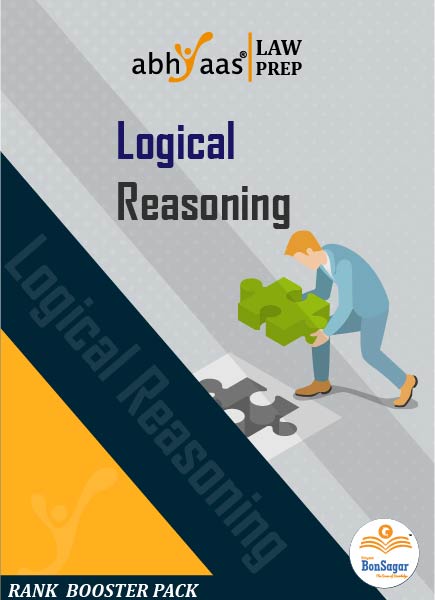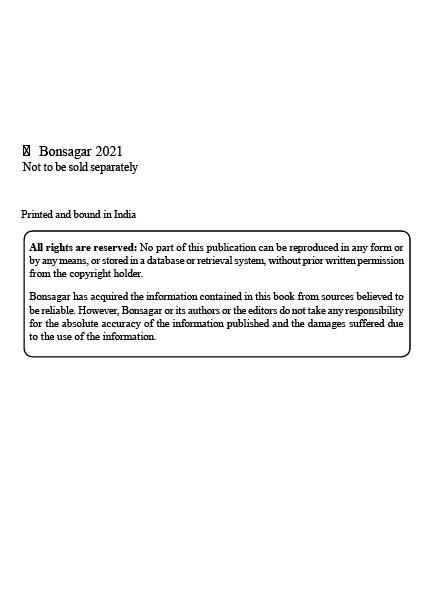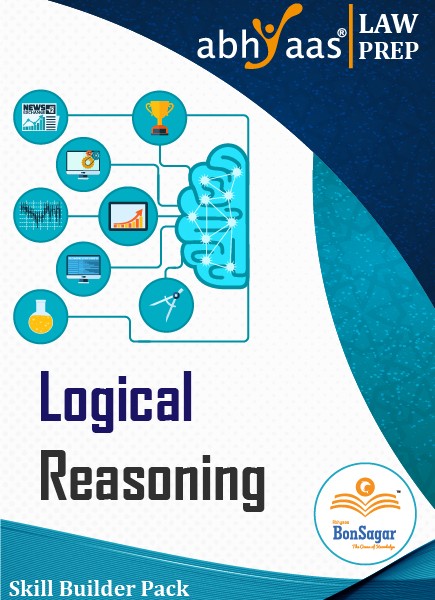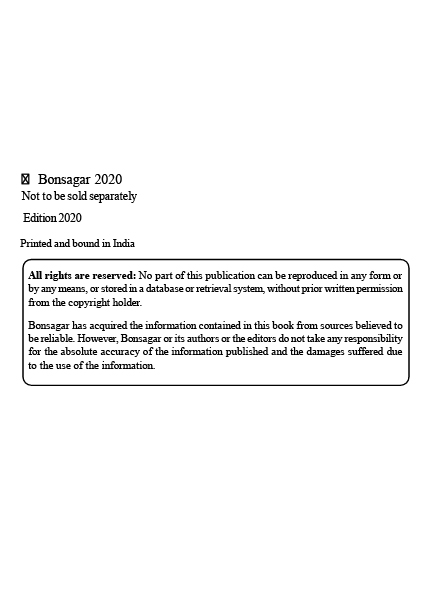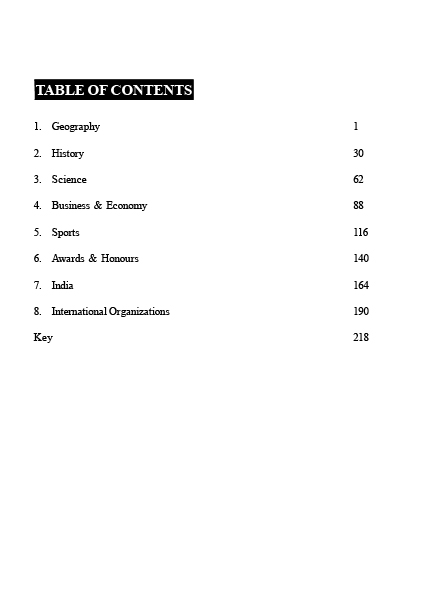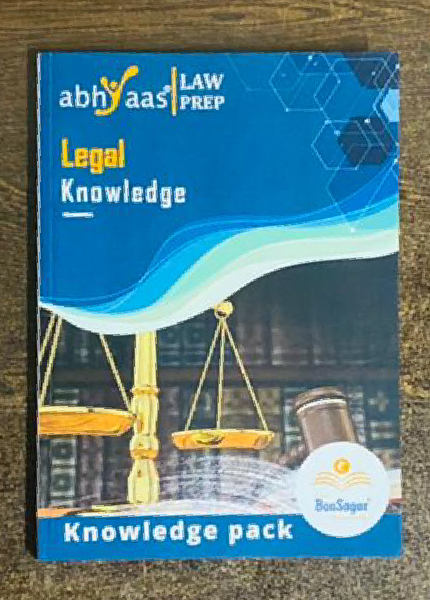
Common Law Admission Test
Common Law Admission Test
Contents
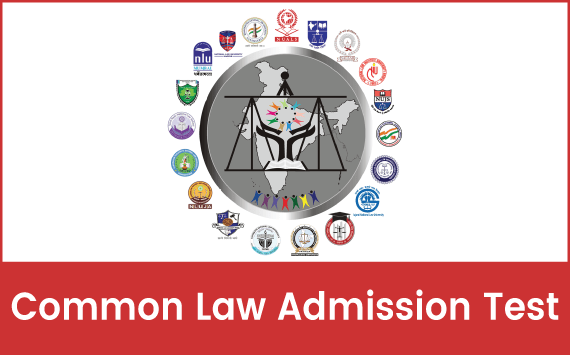
1. Overview
Common Law Admission Test abbreviated as CLAT is the most sought-after test compared to other law entrance exams. The CLAT exam tests an aspirant on their aptitude and not on the knowledge. It checks your ability to think out of box, quickness in Reading and Comprehension, Reasoning Capability, Awareness of Current Affairs.
CLAT exam takes place every year to secure admission in 22 National Law Universities (NLUs) except NLU-Delhi.
2. CLAT Syllabus
1 English Language:
In this section of the UG-CLAT 2020, you will be provided passages of about 450 words each. These passages will be derived from contemporary or historically significant fiction and non-fiction writing, and would be of a standard that a 12th standard student may be able to read in about 5-7 minutes.
Each passage will be followed by a series of questions that will require you to demonstrate your comprehension and language skills, including your abilities to:
- Read and comprehend the main point discussed in the passage, as well as any arguments and viewpoints discussed or set out in the passage;
- Draw inferences and conclusions based on the passage;
- Summarise the passage;
- Compare and contrast the different arguments or viewpoints set out in the passage; and
- Understand the meaning of various words and phrases used in the passage.
English Language Sample Questions for UG-CLAT 2020 (New Pattern)
2 Current Affairs, including General Knowledge:
In this section, you will be provided passages of up to 450 words each. The passages will be derived from news, journalistic sources and other non-fiction writing. The questions may include an examination of legal information or knowledge discussed in or related to the passage, but would not require any additional knowledge of the law beyond the passage.
Each passage will be followed by a series of questions that will require you to demonstrate your awareness of various aspects of current affairs and general knowledge, including:
- Contemporary events of significance from India and the world;
- Arts and culture;
- International affairs; and
- Historical events of continuing significance.
Current Affairs, including General Knowledge Sample Questions for UG-CLAT 2020 (New Pattern)
3 Legal Reasoning:
In this section, you will be expected to read passages of around 450 words each. The passages may relate to fact situations or scenarios involving legal matters, public policy questions or moral philosophical enquiries. You will not require any prior knowledge of law. You will benefit from a general awareness of contemporary legal and moral issues to better apply general principles or propositions to the given fact scenarios.
Each passage would be followed by a series of questions that will require you to:
- Identify and infer the rules and principles set out in the passage;
- Apply such rules and principles to various fact situations; and
- Understand how changes to the rules or principles may alter their application to various fact situations.
Legal Reasoning Sample Questions for UG-CLAT 2020 (New Pattern)
4 Logical Reasoning:
The Logical Reasoning section of the UG-CLAT 2020 will include a series of short passages of about 300 words each. Each passage will be followed by one or more questions that will require you to:
- Recognize an argument, its premises and conclusions;
- Read and identify the arguments set out in the passage;
- Critically analyse patterns of reasoning, and assess how conclusions may depend on particular premises or evidence;
- Infer what follows from the passage and apply these inferences to new situations;
- Draw relationships and analogies, identify contradictions and equivalence, and assess the effectiveness of arguments.
Logical Reasoning Sample Questions for UG-CLAT 2020 (New Pattern)
5 Quantitative Techniques:
The Quantitative Techniques section of the UG-CLAT 2020 will include short sets of facts or propositions, graphs, or other textual, pictorial or diagrammatic representations of numerical information, followed by a series of questions. You will be required to derive information from such passages, graphs, or other representations, and apply mathematical operations on such information.
The questions will require you to:
- Derive, infer, and manipulate numerical information set out in such passages, graphs, or other representations; and
- Apply various 10th standard mathematical operations on such information, including from areas such as ratios and proportions, basic algebra, mensuration and statistical estimation.
Quantitative Techniques Sample Questions for UG-CLAT 2020 (New Pattern)
3. CLAT Exam pattern
-
Maximum Marks – 150
-
Duration of CLAT 2020 Exam – 02:00 Hours
-
Multiple-Choice Questions – 150 questions of one mark each
-
Negative Marking – 0.25 Mark for each wrong answer
| Subject Areas with weightage: | (approximate number of questions) |
|---|---|
| English Language | 28-32 questions, or roughly 20% of the paper |
| Current Affairs, including General Knowledge | 35-39 questions, or roughly 25% of the paper |
| Legal Reasoning | 35-39 questions, or roughly 25% of the paper |
| Logical Reasoning | 28-32 questions, or roughly 20% of the paper |
| Quantitative Techniques | 13-17 questions, or roughly 10% of the paper |
4. CLAT Eligibility
- There will be no upper age limit for UG Programme in CLAT 2020.
- As regards minimum percentage of marks in the qualifying examination (i.e., 10+2 or an equivalent examination), the candidates must have secured:
- Forty five percent (45%) marks or its equivalent grade in case of candidates belonging to General / OBC / PWD / NRI / PIO / OCI categories
- Forty Percent (40%) marks or equivalent in case of candidates belonging to SC/ST categories.
- Candidates who are appearing in the qualifying examination in March/April, 2020 are also eligible to appear in CLAT 2020 examination. However, they shall be required to produce an evidence of their passing the qualifying examination at the time of admission, failing which they shall lose their right to be considered for admission.
- The result of the qualifying examination (i.e., 10+2) shall be submitted by the candidate at the time of admission failing which the candidate shall be ineligible for admission to the Course.
5. How to Apply?
The application and the entire admission process is available on the CLAT website –https://consortiumofnlus.ac.in/
In addition to the 22 NLUs, the CLAT score is also accepted for admission in new NLUs that are yet to be accredited into CLAT as well as private institutions like NIRMA. GITAM and ICFAI too offer admission based on the CLAT score.
6. Previous Year CLAT Exam Analysis
-
How to Manage Time Effectively During CLAT Preparation and Exam Day
Time management plays a crucial role in preparing for and taking the Common Law Admission Test (CLAT). The exam requires not only knowledge but also the ability to manage time
-
Understanding CLAT: Key Changes, Syllabus Breakdown, and Preparation Tips for Aspirants
The Common Law Admission Test (CLAT) is one of India’s most competitive entrance exams for admission to undergraduate (UG) and postgraduate (PG) law programs in top national law universities (NLUs).
-
CLAT Preparation on a Budget: Affordable Resources to Help You Ace the Exam
Preparing for the Common Law Admission Test (CLAT) can be an expensive process, especially with coaching classes, study materials, and practice papers. However, it is possible to prepare for CLAT
-
The Role of Daily Newspapers in CLAT Preparation
The Role of Daily Newspapers in CLAT Preparation Preparing for the Common Law Admission Test (CLAT) is a rigorous journey that requires a deep understanding of various subjects, especially current affairs. While
-
Effective Revision Techniques for CLAT Aspirants
Effective Revision Techniques for CLAT Aspirants Preparing for the Common Law Admission Test (CLAT) requires not just hard work, but also smart revision techniques. Revision helps you remember what you've studied
-
CLAT 2025 Application Form
STEPS FOR CLAT 2025 APPLICATION FORM: The notification for the CLAT 2025 Application Form has been released. It can be found on the website of the consortium. The good news is
-
Dos and Don’ts for CLAT Exam Day
Dos and Don'ts for CLAT Exam Day Introduction: The Common Law Admission Test (CLAT) is a significant milestone for students aspiring to pursue undergraduate and postgraduate law courses in prestigious National Law
-
How to Improve Speed and Accuracy in CLAT
How to Improve CLAT speed and accuracy Introduction: The Common Law Admission Test (CLAT) is a highly competitive exam that requires not only deep knowledge of legal concepts but also the ability
-
CLAT Coaching vs Self-Study
In the pursuit of higher education in law, the Common Law Admission Test (CLAT) stands as a pivotal milestone for aspiring lawyers in India. The choice between preparing for CLAT
-
Tips and Techniques for CLAT Success
Introduction: The Common Law Admission Test (CLAT) serves as the gateway to esteemed law institutions in India. Aspiring lawyers embark on a journey of rigorous preparation to crack this competitive exam.
-
Overcoming Challenges in CLAT Preparation
Introduction: The journey towards cracking the Common Law Admission Test (CLAT) is akin to scaling a mountain, filled with steep slopes, treacherous terrain, and unforeseen obstacles. Aspiring lawyers embarking on this
-
Top Strategies for Acing the CLAT Exam
Introduction: The Common Law Admission Test (CLAT) stands as a pivotal juncture for aspiring law students in India, serving as the gateway to esteemed law schools and promising legal careers. However,
-
Strategies for Improving CLAT Scores
Introduction: The journey towards success in the Common Law Admission Test (CLAT) demands more than mere knowledge—it requires strategic preparation and effective utilization of resources. Aspiring law students often find themselves
-
Developing Critical Thinking Skills for CLAT Success
Introduction: The Common Law Admission Test (CLAT) stands as a gateway for aspirants seeking admission to prestigious law schools in India. Beyond assessing academic knowledge, CLAT evaluates candidates' ability to think
-
Strategies for Last-Minute CLAT Preparation
Introduction: The Common Law Admission Test (CLAT) is a highly competitive examination that opens the gateway to prestigious law schools in India. As the exam date approaches, many students find themselves
-
GD-PI in CLAT Admissions
Introduction: The Common Law Admission Test (CLAT) is one of the most sought-after entrance exams for students aspiring to pursue a career in law. Among the various stages of CLAT admissions,
-
Balancing Board Exams and CLAT Preparation
Introduction: The journey from high school to college is a pivotal phase in every student's life. This transition is marked by the challenges of board examinations and the aspirations of gaining
-
The Role of General Knowledge in CLAT
Introduction : The Common Law Admission Test (CLAT) is a highly competitive examination that opens the gateway to prestigious law schools across India. While legal aptitude, logical reasoning, and other sections
-
CLAT 2024 UG Paper Key- OBJECTIONS
CLAT 2024 UG Paper Key- OBJECTIONS ALP swiftly shared its answer key within an hour of the CLAT 2024 exam held on December 3, 2023, accompanied by a live YouTube session.
-
SLAT 2024 EXAM NOTIFICATION
Symbiosis Law Admission Test, or SLAT 2024 (SLAT 2024). For admission to the four Symbiosis law schools (SLS) in Pune, Noida, Hyderabad, and Nagpur, there is a single entrance exam.
-
The Role of Mock Tests in CLAT Preparation
The Common Law Admission Test (CLAT) is a highly competitive examination that determines the fate of thousands of aspiring law students in India. With limited seats available in prestigious law
-
Common Mistakes to Avoid in CLAT Exam Preparation
The Common Law Admission Test (CLAT) is one of the most competitive and sought-after entrance exams in India for aspiring law students. Every year, thousands of candidates vie for a
-
AP LAWCET
The AP LAWCET test date for the LLB and LLM programmes has been issued by the Andhra Pradesh State Council of Higher Education (APSCHE). In May, Sri Padmavati Mahila Visvavidyalayam,
-
TS LAWCET
The TS LAWCET will be offered online by Osmania University in Hyderabad for admission to the 3-year and 5-year integrated LLB programmes. On the university's official admissions page, lawcet.tsche.ac.in, the
-
HOW TO PREPARE FOR CLAT IN 3 MONTHS
HOW TO PREPARE FOR CLAT IN 3 MONTHS A highly competitive test called the Common Law Admission Test (CLAT) is given to applicants for admission to undergraduate and graduate law
-
WHAT AFTER WRITING CLAT
WHAT AFTER WRITING CLAT One of India's most famous law schools admits students through the Common Law Admission Test (CLAT), a competitive admission test. Being CLAT-certified is a significant accomplishment
-
TIPS TO IMPROVE ENGLISH FOR CLAT EXAM
In order to get admission into prominent law schools in India, aspirant law students must take the Common Law Admission Test (CLAT), a test that is extremely competitive. As the
-
HOW TO IMPROVE GENERAL KNOWLEDGE FOR THE CLAT EXAM
Students who want to study law in India must take the Common Law Admission Test (CLAT), which is a very difficult test. The General Knowledge (GK) component of the CLAT
-
IMPORTANCE OF CLAT EXAM
For aspirant law students in India, the Common Law Admission Test (CLAT) is crucial. It acts as a point of entry for enrollment in the esteemed National Law Universities (NLUs)
-
HOW TO MANAGE TIME IN THE CLAT EXAM
HOW TO MANAGE TIME IN THE CLAT EXAM In addition to having a firm understanding of legal principles, candidates for the Common Law Admission Test (CLAT) must also have exceptional
-
GENERAL DEFENCES IN LAW OF TORTS
GENERAL DEFENCES IN LAW OF TORTS A broad variety of civil wrongs that cause pain or injury to people or their property are covered by the law of torts, which is
-
FUNDAMENTAL RIGHTS: EQUALITY BEFORE LAW
FUNDAMENTAL RIGHTS: EQUALITY BEFORE LAW Each and every person must be treated with respect, equity, and equality, and fundamental rights serve as the cornerstone of any democracy. Equal protection under the
-
HOW TO INCREASE EFFICIENCY IN READING COMPREHENSION FOR CLAT?
HOW TO INCREASE EFFICIENCY IN READING COMPREHENSION FOR CLAT? A key competency for passing the CLAT exam is reading comprehension. Developing effective reading comprehension strategies is crucial since the test gauges
-
CAREER OPPORTUNITIES AFTER CLAT
"Career Opportunities after CLAT" - The Common Law Admission Test (CLAT) opens the gateway to numerous "Career Opportunities after CLAT" in the legal industry. CLAT allows law aspirants to access
-
IMPORTANT LEGAL MAXIMS AND PHRASES FOR CLAT
IMPORTANCE OF LEGAL MAXIMS In the study and practise of law, legal aphorisms and phrases are important. They include centuries' worth of legal knowledge and serve as a guide for lawyers
-
CLAT 2024 EXAM NOTIFICATION
CLAT 2024 If you're considering taking the CLAT in 2024, you can find all the pertinent information and latest changes right here! Putting everything else aside, we want to share with
-
CLAT 2021 Exam Analysis
CLAT 2021 EXAM ANALYSIS CLAT EXAM DATE: 23rd July 2021 No. of Questions: 150 Time: 120 minutes – 0.25 Negative Marking Conducted as Pen Paper Test, at various centers. The passage-based pattern is not new anymore.
-
CLAT-2020 (UG) SYLLABUS & GUIDE
GUIDE TO THE UG-CLAT 2020 The Consortium of National Law Universities (the “Consortium”) announced certain modifications in the pattern of the Common Law Admission Test (the “CLAT”), 2020 in its Press
-
CLAT 2019 Counseling Discussion
This is a brief explainer video about the CLAT 2019 Counselling process.
-
CLAT 2019 Analysis & Discussion Board
CLAT 2019 Live Analysis on 26th may 2019 @7:00 PM
-
CLAT 2018 (Post Key) Analysis
The difficulty level of a section is assessed as a function of both the toughness of questions as well as deviation from the expected pattern.
-
CLAT 2018 Analysis
The difficulty level of a section is assessed as a function of both the toughness of questions as well as deviation fromthe expected pattern.
-
CLAT 2017 – Rank Based Cutoff Predictions
Once the CLAT-2017 score cards are released, the next question lingering in the minds of students is ‘Which NLU will I get into?’ or ‘Will I make it to any
-
CLAT 2017 Analysis
The difficulty level of a section is assessed as a function of both the toughness of questions as well as deviation from expected pattern.
-
CLAT 2016 Analysis
* The difficulty level of a section is assessed as a function of both the toughness of questions as well as deviation from the expected pattern. This analysis is based
-
CLAT 2015 Analysis
This section was the only breather in this year's CLAT. With some questions on expected lines, good students would have scored well in this section.
-
CLAT 2014 Analysis
This section was along the expected lines with a distribution across various areas similar to CLAT 2013. With just one RC passage, the section becomes the easiest section of CLAT
7. CLAT 2020 in News
-
CLAT 2020 New Pattern Demystified
This is a detailed interview with our Founder Mr.Naresh Dubbudu regarding the pattern changes in the CLAT 2020 exam. In the interview, he answers some of the most common questions
-
CLAT 2020 Application Process & NLU Preferences
CLAT 2020 Application Process & NLU Preferences CLAT 2020 Online Application Process is now open from 1 Jan 2020 to 31 March 2020. Here's a detailed video regarding the CLAT 2020 Application Process.
-
Instructions for CLAT-2020 (UG) programme
Important Instructions: The online enrollment for CLAT 2020 will open on 1st January 2020 and close on 31st March 2020. The applications has to be submitted ONLINE only from consortiumofnlus.ac.in
-
CLAT-2020 (UG) Eligibility
CLAT-2020 (UG) Eligibility There will be no upper age limit for UG Programme in CLAT 2020. As regards minimum percentage of marks in the qualifying examination (i.e., 10+2 or an





























